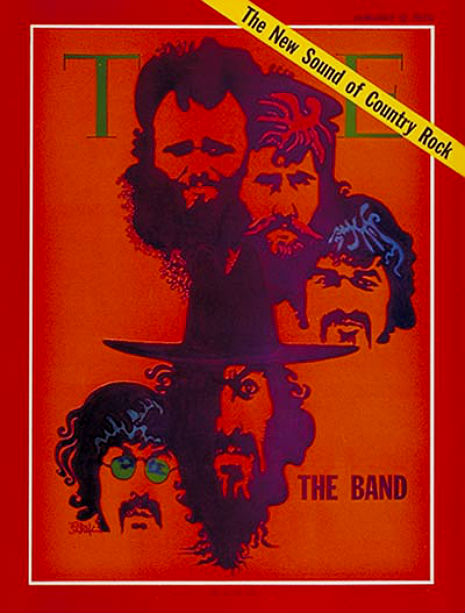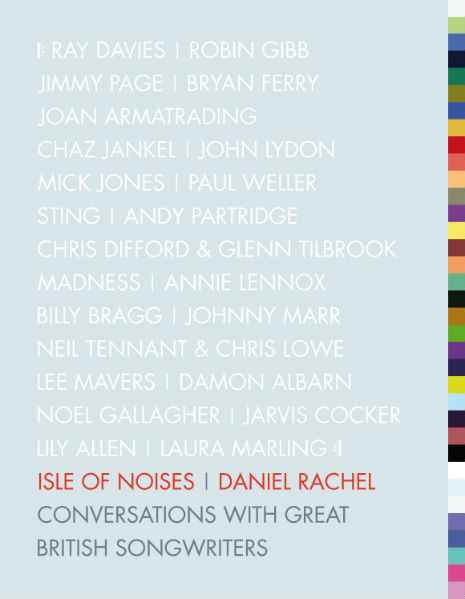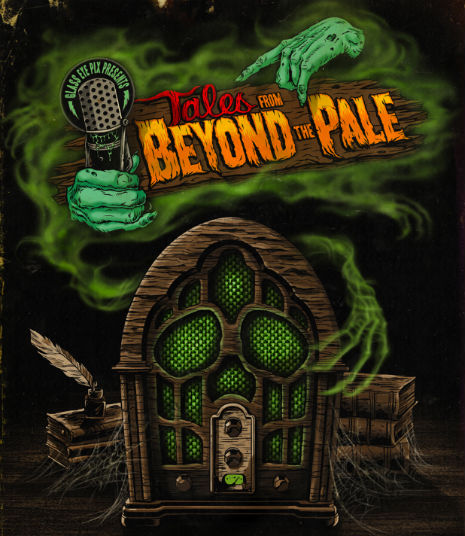
If I am to judge the product purely on the quality of the music and how much I enjoyed it, I would be obliged to give the new box set Live at the Academy Of Music 1971 by The Band a 5/5. It sounds really good. The performances are nothing short of incredible. It blew my doors off.
by The Band a 5/5. It sounds really good. The performances are nothing short of incredible. It blew my doors off.
The four CDs and one DVD are encased in a nice glossy hardback cover with slick embossed lettering, short essays and color photos. It’s a nice thing to hold in your hands and it got me listening to The Band again. Box sets are good that way and I reacted in the expected Pavlovian slobbering fanboy manner.
Oh children, believe me when I tell you that I can rhapsodize about The Band and this is them at the height of their powers, playing their hearts out over the course of a four-night stint at the old Academy of Music on 14th Street in New York, the cavernous venue that would later become the Palladium nightclub, the set of Club MTV and is now… NYU dorms! They were accompanied by a crack horn section arranged by Allen Toussaint that gave their Civil War folk rock a Stax/Volt swing. Bob Dylan even showed up for the encore of their New Year’s Eve set and performed four numbers with them.
The recordings of these shows are what became the Rock of Ages album, a 2 LP release from the summer of 1972. That album went to #6 in the album charts and is considered by many to be one of the greatest live albums ever recorded.
album, a 2 LP release from the summer of 1972. That album went to #6 in the album charts and is considered by many to be one of the greatest live albums ever recorded.
I haven’t had a chance to listen to all of the box yet, but the 5.1 surround, mixed by Bob Clearmountain is quite good and discs 3 and 4 with the raw “you were there” soundboard mixes from New Year’s Eve are also pretty cool. But why anyone would require seven of the same songs from the first two discs to be repeated—well same performance, with a different, more immediate, less hi-fi mix—on discs 3 and 4 is beyond me. The 5.1 mix is the same songs (minus the Dylan numbers) from the first two discs. There are only seventeen unreleased tracks here. Most people who would want this already have Rock of Ages and in fact may have purchased it in multiple formats. There have already been several CD versions.

The problem with reviewing this box is that I like the music, I like it a lot, but it’s so repetitive that the idea of asking fans of The Band to plunk down $109 (Amazon discounts it to $73) and expecting that they’ll do it seems frankly insane to me.
What gives?
The initial Amazon reviews of Live at the Academy Of Music 1971 have been nothing short of brutal, slamming Robbie Robertson for ripping off his biggest fans and decrying the repetitive nature of the box set. They’ve got a point!
have been nothing short of brutal, slamming Robbie Robertson for ripping off his biggest fans and decrying the repetitive nature of the box set. They’ve got a point!
What I can’t believe is that the 5.1 mix is just a (lossy) Dolby file on a DVD and not an HD DTS version on a Blu-ray disc. There’s no high-res stereo file, either, just one encoded at 448 kbps/48kHz. For audiophiles, this is a massive turn-off and although this seems to be news to the major labels, they’re the ones who are still buying those round shiny silver things that you can hold in your hand. Don’t get me wrong, I like Bob Clearmountain’s mix, but I’d sure like it a lot more on a Blu-ray disc! It sounds great, but it could sound a lot better. Me, I’d rather have that superior version, especially at this price point.
It stands to reason that the majors would want to appeal to the people—cater to them, kiss their asses—who would *actually buy* what basically amounts to three versions of Rock of Ages by giving them some value for the money. Even those intelligence-insulting Pink Floyd box sets with the drink coasters and Pink Floyd marbles had the surround audio portion on Blu-ray discs. They overlap in the material here, too, is simply so shameless, that you just have to laugh. At either $109 or $73, it’s not a good value for the money.
by giving them some value for the money. Even those intelligence-insulting Pink Floyd box sets with the drink coasters and Pink Floyd marbles had the surround audio portion on Blu-ray discs. They overlap in the material here, too, is simply so shameless, that you just have to laugh. At either $109 or $73, it’s not a good value for the money.
By comparison, the upcoming Van Morrison Moondance box set has 4 CDs and a high-resolution 48K 24 bit PCM stereo and DTS-HD Master Audio 5.1 surround sound mix on a Blu-ray and this will sell for $56. I reckon that this is still too high of a price to ask when everyone knows that each and every song on those 4 CDs would fit onto the Blu-ray. I think a $35 list price for an expanded catalog classic that’s been plundered for profits over and over again is where the multi-generational sweet spot is.
box set has 4 CDs and a high-resolution 48K 24 bit PCM stereo and DTS-HD Master Audio 5.1 surround sound mix on a Blu-ray and this will sell for $56. I reckon that this is still too high of a price to ask when everyone knows that each and every song on those 4 CDs would fit onto the Blu-ray. I think a $35 list price for an expanded catalog classic that’s been plundered for profits over and over again is where the multi-generational sweet spot is.

Fact is, if I was given the option of buying classic albums on Blu-ray, with either a 176/24 version of some album I love or a 5.1 surround mix (or preferably both) and the list was $35, I’d still be buying the same amount of music that I bought back in 2004. But I’m not offered that option or if I am, it’s not at that price point and I get stuck with a bunch of stuff I don’t want, like a “Dark Side of the Moon” scarf… Go much over $35 and you lose me as a customer.
But this is hypothetical, because seldom does what the accountants at the labels think will sell and what the fans want overlap, it’s just that obvious. Many people have excellent audio-visual equipment in their homes and a desire for quality software products to enjoy on their electronics, but the labels never even attempt to engage these consumers. It’s so completely ass-backwards that it’s… annoying.
There are some rays of hope. For instance Panegyric’s upcoming XTC and Yes reissues done by Porcupine Tree’s Steve Wilson—who has previously worked his magic on the King Crimson catalog—feature a CD and a Blu-ray disc combo with high-res audio, 5.1 surround mix and music videos. There’s also a CD/DVD version that will sell for about $25; the Blu-ray/CD pairing goes for around $30.
DING-DONG, this is the perfect formula. I can’t see why the big labels don’t get that. The majors need to look at what Steve Wilson is doing—and no one else but Steve Wilson—and get him to advise them so they stop falling on their faces so hard each and every time they put out these sorts of releases! DO WHAT HE DOES. HE GETS IT. COPY HIM. When they let bean counters and marketers make these decisions they make them based on faulty assumptions of what record buyers and fans want. Steve Wilson? He knows what I want!
In the case of The Band box , the blame for the list price should probably be laid at the feet (or the ego) of the producer, Robbie Robertson. As one Amazon wag put it, there’s only so much ore in that mine. I expect Robertson understands what he means by that. Anyone paying full retail for this box would. The Band’s vault has simply been plundered too many times. The high list price of Live at the Academy Of Music 1971
, the blame for the list price should probably be laid at the feet (or the ego) of the producer, Robbie Robertson. As one Amazon wag put it, there’s only so much ore in that mine. I expect Robertson understands what he means by that. Anyone paying full retail for this box would. The Band’s vault has simply been plundered too many times. The high list price of Live at the Academy Of Music 1971 turns off the most ardent fans and insures that no new ones will be coming aboard. That’s a shame.
turns off the most ardent fans and insures that no new ones will be coming aboard. That’s a shame.
Don’t get me wrong, what’s on the discs, well, it’s fine. It’s magic. It’s like having gold poured into your ears. It’s The Band at their very best.
But it’s overpriced like crazy and I gotta call it like I see it. If this was a Blu-ray disc with the Clearmountain 5.1 mix in HD DTS and a high-res stereo mix, plus the soundboard mix as an extra, at a $35 or under price point, I’d be raving like a lunatic telling all of you to run out and buy it. Now.
Not to be a buzzkill(!) here are four songs (“Time to Kill,” “The Weight,” “This Wheel’s on Fire,” “Up on Cripple Creek”) from The Band performing live at The Syria Mosque in Pittsburgh on November 1st, 1970.
Posted by Richard Metzger
|
09.19.2013
07:00 pm
|














